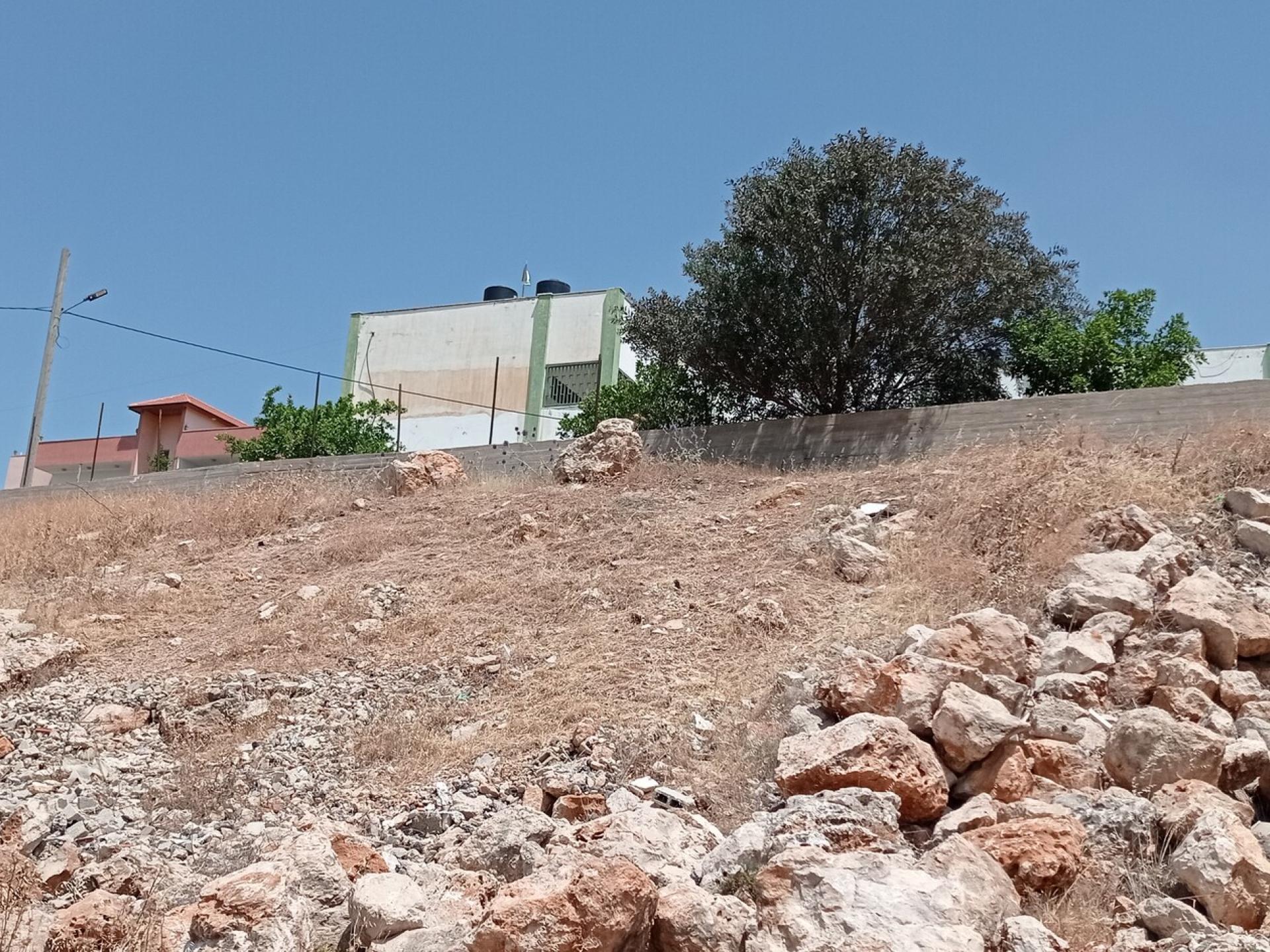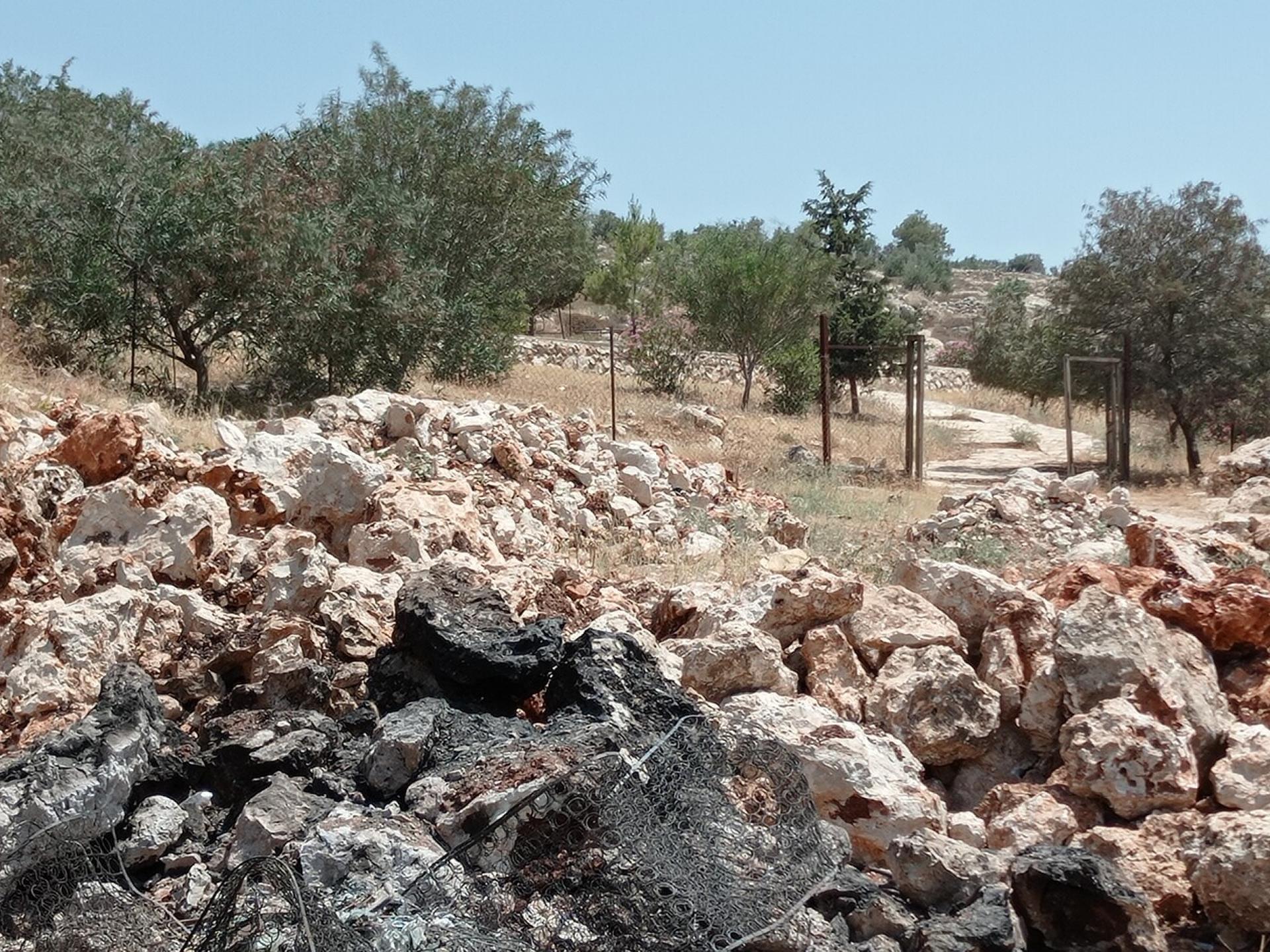Deir al-Hatab, Maqam Sheikh Bilal
Moving towards making Maqam Sheikh Bilal accessible to Palestinians and restoring it
The Jerusalem delegation of the Norwegian Refugee Council expressed their interest via Attorney Meta Amar Shiff, to being changing the existing state of qam sites in the West Bank that are not accessible to Palestinians. They have consulted us to check the possibility to begin with Maqam Sheikh Bilal which is situated on Mount Kabir and controlled by Alon More colony. We met with A. at Deir Al Hatab, a part of whose lands have been confiscated by the colony. The purpose is to check whether the village would be interested in action together with the Norwegians to make Mt. Kabir and the Maqam accessible to Palestinians. A. would love to cooperate. He was 10-years-old the last time he visited the site. His memories are sharp – a child’s memories of a sacred site from which with one fell swoop he and his Palestinian brothers were prevented from visiting ever again.
There is a rumor in the village that the Maqam is being restored. We refuted it, showing photos we took less than two months ago, on April 25 of the current year, at which time we remarked the site’s neglected state.
We drove with A. to the outskirts of the village, to the schoolhouse. This is less than 1 kilometer as the crow flies from the road to the colony and to the spring which in occupation-terms is named Ein Kefir, originally in Arabic – Ein Al-Kabir. We drove to the point from which he said he was not able to proceed. The school rose above us. Park borders the school but is situated in the ‘forbidden’ area, so the school children may not use it. We didn’t approach it, in order not to complicate things with the army. Naturally, they are not allowed to approach the spring either. From our way, we could clearly see the colony houses, as well as the Maqam on the bare, distant hill.
Each family in the village owns an olive tree grove on Mt. Kabir, close to the Alon More colony. For three days a year, the Israeli army enables them to get to their trees. Only at olive harvest time. They mustn’t plow the area. The families come to harvest their olives with the army’s escort. At times, colonists try to prevent this work, but the army tries to keep them and the Palestinians apart. The difficulty of climbing Mt. Kabir does not deter the owners. They must hike for up to 10 kilometers. Naturally, they are not allowed to come by vehicle, nor by a tractor. The harvested olives are carried on their backs. I asked whether donkeys are allowed. He laughed – there are no donkeys in the village.
We heard that a colonist outpost has been founded next to Alon More. The young generation that was born and raised in the colony do as they please. They drive their ATVs on army tracks and reach Alfei Menashe colony. We were told of a track suitable for vehicles that bypass the Alon More checkpoint and the colony houses and reach the Maqam. We drove to the colony to check this out. We learned that no such track exists. This was confirmed by the guard at the gate. We also found out about visiting the nature reserve of Mt. Kabir on Saturday and were told that the gate is closed. No one comes or goes. The area officially declared a nature reserve has been denied to the public although it is not part of the colony itself, only because of a checkpoint controlled by the colonists on the sole road leading to it.
We should inquire about the legality of closing that checkpoint off on Saturdays and denying an entire public from visiting a nature reserve with their families on the only day they have off work.


